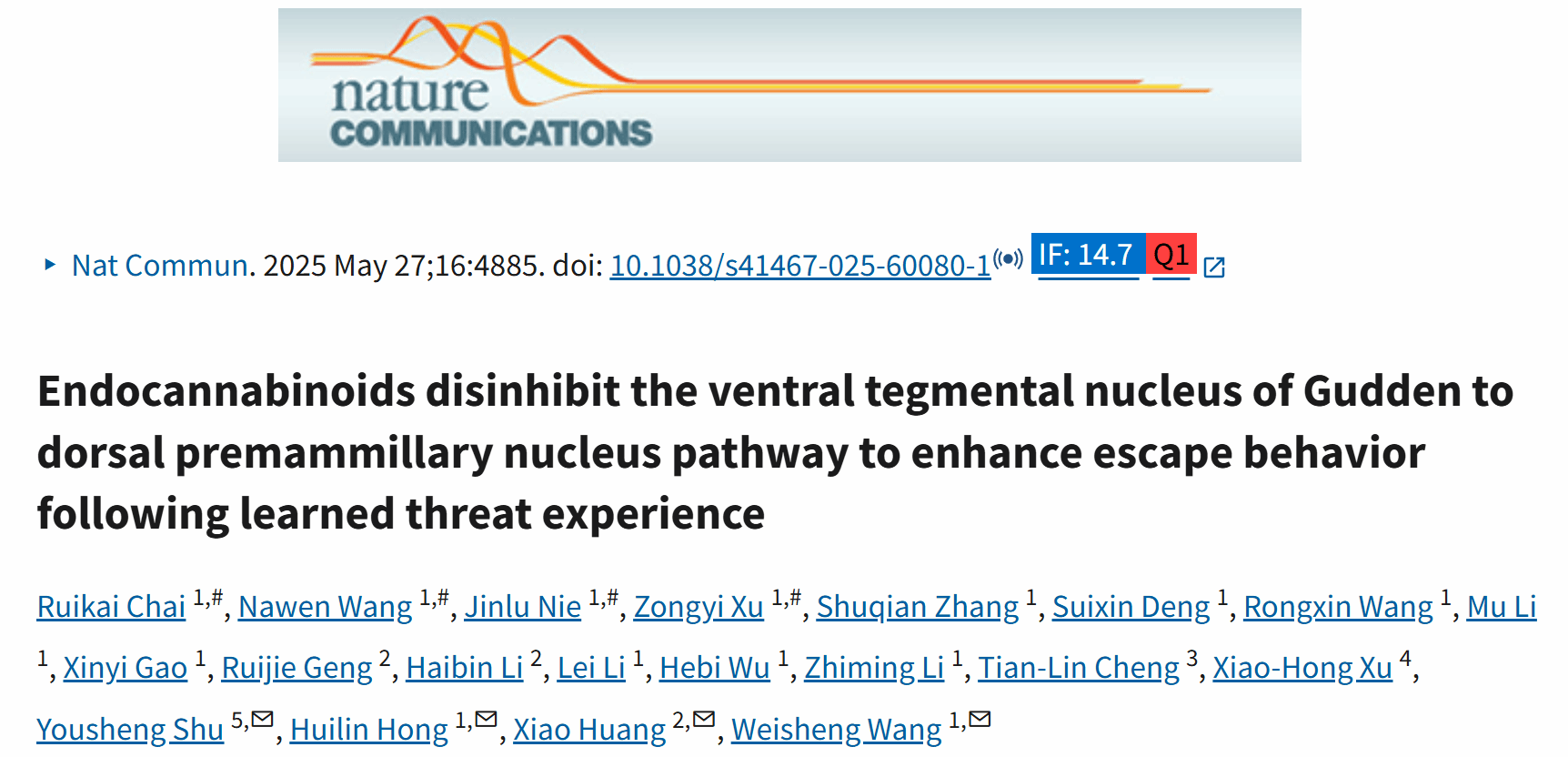
Flight behavior is a hard-wired instinctive response when animals face threats, which is crucial for survival. Abnormal activation of the associated neural circuits is closely linked to the pathogenesis of clinical panic disorder. The studies suggest that innate fear behaviors are not fixed and can be regulated by prior experiences. However, how threatening experiences modulate panic-like flight responses in animals and the underlying neural mechanisms remain poorly understood.
A collaborative study between Dr. Weisheng Wang's group at the Institute for Translational Brain Research, Fudan University and Professor Xiao Huang's team at Zhongshan Hospital affiliated with Fudan University was published in Nature Communications under the title: "Endocannabinoids disinhibit the ventral tegmental nucleus of Gudden to dorsal premammillary nucleus pathway to enhance escape behavior following learned threat experience". This study reveals for the first time that endocannabinoids mediate the potentiation of threat-induced panic-like responses through disinhibitory regulation- specifically by reducing activity in the inhibitory neural circuit from the ventral tegmental nucleus of Gudden (VTg) to the dorsal premammillary nucleus (PMd). The findings provide novel perspectives for understanding the pathogenesis of clinical panic disorder and offer a plausible pathological mechanism explaining why cannabis users frequently experience comorbid panic attacks.
This study employed fiber photometry, pharmacological interventions, and gene editing techniques to reveal that endocannabinoids (eCBs) play a critical role in enhancing escape behavior through disinhibitory regulation of VTg→PMd neural circuit activity. Specifically, learned threat experiences activate medial prefrontal cortex (mPFC) projections, triggering eCB release that suppresses axon terminal activity of parvalbumin-expressing neurons in VTg. This consequently induces disinhibition of cholecystokinin (CCK)-positive neurons in PMd, thereby amplifying panic-like flight responses.
The research team systematically dissected the structure and function of this neural circuit through multiple experimental approaches, including viral-mediated cell-type-specific labeling, optogenetic manipulation, chemogenetic regulation, and electrophysiological recordings. Experimental results demonstrated that PMdCCK neuronal activity was significantly enhanced following learned threat experiences, with this potentiation strongly correlating with amplified panic-like escape behaviors. Furthermore, genetic ablation and pharmacological blockade of endocannabinoid receptors on VTgPV neurons abolished threat experience-induced potentiation of escape responses, thereby establishing the necessity of eCB signaling in regulating such behavioral amplification. These findings not only enrich our understanding of the neural circuitry and molecular mechanisms underlying instinctive escape behaviors but also provide novel perspectives for comprehending panic disorder episodes, offering high-value targets for developing small-molecule therapeutics or circuit-based interventions against panic disorder.
Professor Weisheng Wang (Principal Investigator, Institute for Translational Brain Research, Fudan University), Professor Xiao Huang (Zhongshan Hospital affiliated with Fudan University), Associate Investigator Huilin Hong (Institute for Translational Brain Research, Fudan University), and Professor Yousheng Shu (Institute for Translational Brain Research, Fudan University) served as corresponding authors of this paper. Ruikai Chai, Nawi Wang, Jinlu Nie, and Zongyi Xu from the Frontier Research Center of Brain Science, Fudan University are co-first authors. Significant contributions were made by doctoral candidates Shuqian Zhang, Suixin Deng, Rongxin Wang, Mu Li, and Xinyi Gao (Frontier Research Center of Brain Science, Fudan University), along with Dr. Ruijie Geng and Dr. Haibin Li (Zhongshan Hospital affiliated with Fudan University).
